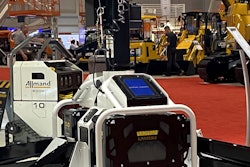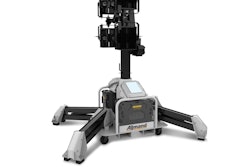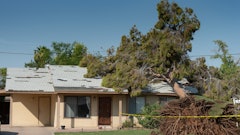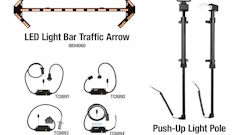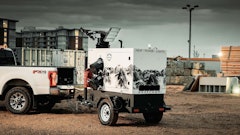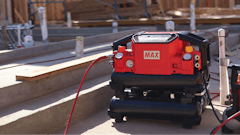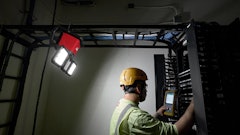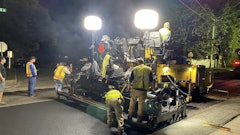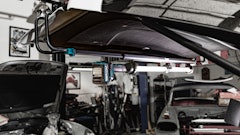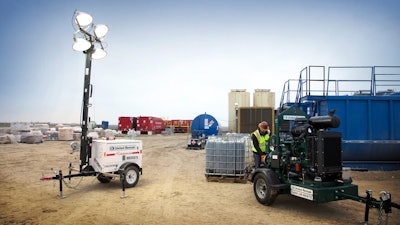
Whether it’s lighting a construction worksite at night, lighting during a planned shutdown or for emergency response crews working around the clock after a natural disaster, portable work lights are a necessary component to get the job done safely.
Creating a lighting solution is a matter of choosing the right size, style and number of portable light towers. From commercial construction to industrial operations and public projects, it is often helpful to tap an equipment rental provider’s team of specialized engineers and technicians to create a personalized solution specific to worksite needs. And having 24/7 response time by the rental provider can also important to worksite productivity.
Here are five key considerations when making a portable lighting choice for a worksite.
1. Determine Coverage and Brightness
The first step is to determine the size of the area that needs to have light and inquire about the footprint the light tower illuminates. Also consider the level of brightness needed for the worksite. A construction site needs to be well-lit so workers can see what they’re doing – and that requirement varies based on the work being done.
2. Consider Height and Rotation
If height is needed for the worksite, check how high the mast can extend and the ease of extending it; winches may be manual or electric. Keep in mind high winds can tip over a tower and cause damage to people and property. Make sure the light tower selected has a stabilization system. Leading systems can keep the tower steady in winds up to 65 mph.
For maximum flexibility, check that the mast can be easily rotated (many rotate 360°) and that the lights can be tilted so illumination goes exactly where needed. It can also come in handy to have a light tower that offers a dawn-to-dusk setting or timed start/stop setting.
3. Select Halide or LED Lights
Many portable light towers feature metal halide lights. These bright, warm lights can provide a great deal of illumination. However, they can take some time – five to 10 minutes – to warm up before they reach their maximum output. Also, they don’t turn off immediately; they need to cool down.
High-intensity, bright white LED lamps are a newer option. They are low-voltage and require less energy than metal halide lights. But they don’t provide quite as much illumination. That means more lights will be needed to achieve the same level of lighting. On the plus side, LED lights are instant-on and turn off right away, as well. LED lights should also last longer than metal halide lights.
If there is a concern about glare from the lights, such as blinding drivers traveling past a worksite, consider LED lights and ask about visor shields that can block the light in certain directions.
4. Evaluate Power Choices
Power options for light towers include diesel fuel, generator, solar-charged batteries and, of course, an electric power outlet. If noise matters, keep in mind that solar and electric light towers are silent.
Light towers that run on diesel fuel have their own tanks. Larger tanks provide longer uninterrupted run time, which means fewer potentially dangerous refill situations. Be sure the light tower includes a fluid containment system to reduce the chance of spills.
If a generator-powered portable light tower is selected, figure out how much power it will draw at startup and size the generator accordingly. A company should consider renting or buying a generator that provides enough power for other equipment used at the site.
When planning to use an electric light tower, check how much power it will draw and make sure the worksite electrical system can handle it. Failing to do so could jeopardize the operation of all electrical equipment on the site.
Solar-powered light towers are a relatively new, eco-friendly option that uses batteries charged by solar panels to light their LED lamps. Look for a system that offers movable solar panels to maximize the amount of sunlight captured. While it’s great to lower the carbon footprint and go green with lighting, a backup power source should be available for cloudy or rainy days.
5. Look at Transport Needs
When renting a portable light tower, be sure to consider how the light tower will be transported to the worksite. Some portable light towers sit on a trailer that can go on highways or even off road in the case of the most durable towable models.
For jobs done at night, workers must have enough lighting to be productive and safe. Lighting solutions also need to not disrupt oncoming roadway traffic or people and property nearby. Working with a rental provider to develop a customized solution can play a big role in worksite success.
Doug Distel is a National Account Manager, Restoration & Power, at United Rentals. He has been with the company for more than 14 years.




